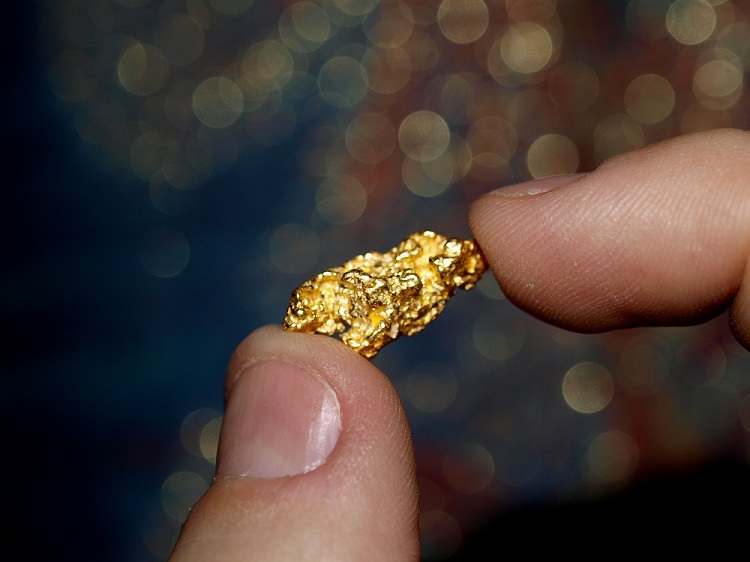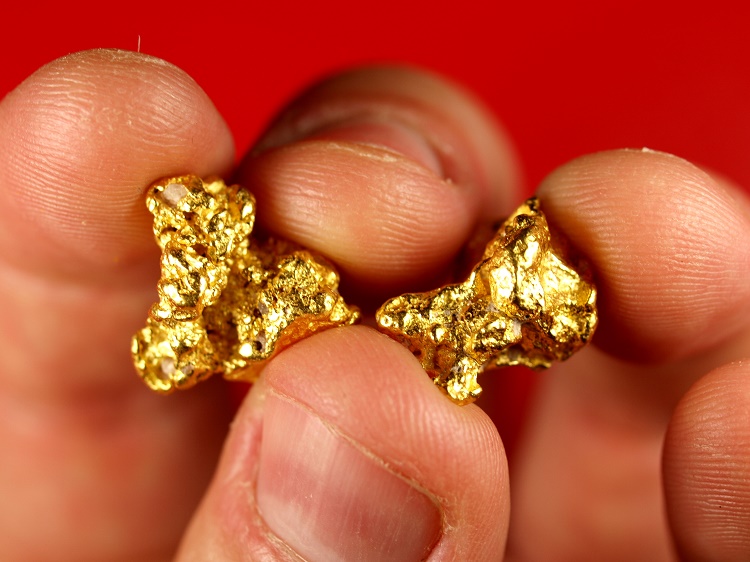
Although gold discoveries had been rumored for years, it is believed that the first documented discovery of gold in Australia was in the State of South Australia, where a 12-ounce nugget was dug up by J. Richards at the Victoria Mine near Castambul in 1846. Within the same year, another gold find occurred at the Kitticoola Mine in the Kanmantoo Trough.
The following year was discovery of alluvial gold by on the Torrens and Onkaparinga Rivers. In 1849, a farmer dug up a piece of gold-bearing quartz at the South Para River toward Gumeracha in the Barossa Valley. These successive events, while important, got much less attention from the populace since they were overshadowed by other remarkable discoveries in other states at the time.
The historical productions of gold in South Australia were usually recovered from two primary deposit types: gold deposition in quartz veins (lodes or reefs); and, deposits that were principally mined for base metals, where gold is obtained as a byproduct. Aside from the primary deposits, secondary deposits were also major gold sources that come from alluvial deposits derived from primary mineralization through weathering processes such as physical erosions and chemical reactions in the ground.
These deposits were dominantly prevalent in three gold provinces particularly located in the eastern portion of Adelaide; the Mount Lofty Ranges, which stretches from the south to the Fleurieu Peninsula and northward to the wine region of the Barossa Ranges; the Nackara Arc, which extends from the pastoral town of Burra in the central north towards the state’s easternmost settlement of Olary; and the Tarcoola-Glenloth regions in the east.
GOLD DISCOVERIES AND LOCATIONS IN THE MOUNT LOFTY RANGES (ADELAIDE HILLS)
The impact of the other gold rushes in Australia saw a lessened population in South Australia, where prospectors traveled towards Victoria and New South Wales in search of instant riches. This mass-exodus prompted the government to offer a £1,000-reward for payable gold finds, and reduced monthly prospecting licenses from 30 to 10 shillings within the state from 1851 and onwards.
A discovery of rich alluvial gold in Chapman’s Gully and Donkey Gully near Echunga occurred early in 1852. The mines here reportedly produced 3,100 kg of gold in the first few years, and the site became the state’s first gold rush. In 1854, reef and alluvial gold were found at the Palmer Goldfield in the Kanmantoo Trough.
Between 1969 and 1976, an estimated 160 kg of gold were produced as a by-product from the Kanmantoo copper mine.
Gold was also found at Long Gully south of Echunga, which comprises the areas of Fosters and White Gullies, and Surface and Golden Points. Overall, the Echunga Goldfield proved to be the state’s most productive, yielding approximately 6,000 kg of gold.
In late 1868, the Barossa Goldfield was established after a gold rush was sparked by Job Harris and his prospecting party, who found alluvial gold deposited south of Sandy Creek and at Spike Gully.
Another gold rush ensued in Victoria Hill Town nearby Barossa Mine and at the Lady Alice Mine in the Para Wirra Goldfield in 1869. During 1877-78, a number of small rushes on alluvial gold occurred in the goldfield’s Humbug Scrub area, with Mary’s and Devil’s Gullies, and Bismark Diggings as the most notable sites. Also in 1869, the Birdwood Goldfield was created after gold was detected at the Hynes Reef diggings and Black Snake Mine.
In 1870, a succession of 170 gold mines were set up— including gold diggings at Mount Torrens, Mount Pleasant, and Birdwood (formerly Blumberg) Township in the Torrens River at the eastern Adelaide Hills.
At Deloraine in nearby Mount Pleasant, situated 10 km northwest of Birdwood and 35 km northeast of Adelaide, James Scott found gold in 1871. Eventually, the Deloraine Mine became the largest gold producer in the Adelaide Hills, yielding a total of 850 kg. Another gold rush occurred in 1877 at Biggs Flat. The yellow metal was discovered by Mr. J. Biggs on the western side of the Onkaparinga River between the old Stirling Reef workings and Wheatsheaf Inn.
In 1884, John Watts laid claim to a gold find in the Gumeracha Goldfield or the Mount Crawford Goldfield, particularly at Watts Gully, where it yielded gold nuggets reportedly as large as 14 ounces. Almost simultaneously, other discoveries followed at Sailors, Speck, Dead Horse, and Blood, and Thunder Gullies.
Also Read: Gold Mining on the Island of Tasmania
The Woodside goldfield hosted the Bird-in-Hand, New Era and Eureka Mines, which began operations in 1881 and produced a combined output of 933 kg of gold. Further discoveries occurred around the Mount Lofty Ranges at the Deloraine Goldfield near Kersbrook Township in 1909 with total productions of 1.1 tons of gold. Other significant goldfields in the region included the alluvial goldfields of Angaston, Forest Range, Gomersal, Lobethal, Moppa, Uraidla, and Willunga.
GOLD DISCOVERIES IN THE NACKARA ARC AREA
During the gold strikes in the Mount Lofty Ranges, attention shifted to other gold occurrences in both the central and northeastern parts of the state, generally comprising the Nackara Arc area. In 1860, the Moonta and Wallaroo Mines began underground mining, principally for copper. Both produced an estimated 3.6 tons of gold as a byproduct from 9 million tons of copper ore between 1860 and 1938.
Part of the Moonta field was the Poona and Wheal Hughes copper-gold lode mines, which recovered 423 kg of gold by open-cut mining between 1988 and 1993. Ulooloo Goldfield, near the township of Burra, was founded in 1869, with gold primarily being mined from the Noltenius and Coglins Creeks.
The gold discoveries thereafter occurred in succession from 1885 up to 1892. The Westward Ho and Homeward Bound Mines became chief sources of gold in 1885 in the Mannahill Goldfield, where they produced significant gold.
The following year, a major and extensive gold rush occurred at Teetulpa, situated near Yunta, northeast of Peterborough, in the Flinders Ranges. Gold was identified by Thomas Brady and Thomas Smith at Brady’s Gully.
The goldfield held the largest multitude of miners in any field at any time in South Australian gold mining history, with most diggers originally coming from Chapel Hill. The field was virtually deserted by 1889 after producing 3,132 kg of gold. Despite its extreme dryness and harsh conditions, the Teetulpa Goldfield was reportedly the most profitable in the colony.
Also Read: The Famous Golden Eagle Nugget
It should be noted that the Teetulpa Goldfield proved richer with numerous recoveries of gold nuggets of ideal sizes, the largest piece weighing 13 ounces at shallow depths of up to 5 feet. Their locations were specifically dug up at Goslin’s Gully, which joins Brady’s Gully about 800 m below the prospectors’ claims; Strawbridge Gully, south of Brady’s Gully and emptying near Tonkin’s Well; and, Deep Gully behind Hospital Hill, west from Brady’s Gully.
In 1887, gold was found at Kings Bluff. The Luxemburg and Queens Bee Mines in the New Luxemburg Goldfield, in the Curnamona Province, were established at the same time and produced much gold between 1887 and 1916. Gold quantities reaching 743 kg were recovered from Wadnaminga Goldfield, established in 1888.
Mining started in earnest at Tapley Hill in the Mongolata Goldfield around 1889. Taltabooka Goldfield was also discovered in 1889 but was a smaller producer. Also making its mark on the gold map in the same year was the isolated and extremely hot area of Mount Ogilvie, situated near Tower Gap on Mount Lyndhurst in the Northern Flinders Ranges, where gold was found. A gold rush ensued with recoveries of nuggets reported as large as 7-ounces at the Golden Hole.
Mount Grainger Goldfield was recognized in 1891. The Golden Gully and Windlass Hill Mines at the Angepena Goldfield in the Flinders Ranges followed suit in 1892. Finally in 1894, the Nillinghoo Goldfield was set up, with the Kirkeeks Treasure Mine being a major producer. Also in 1894, Johnson’s Gully north of Waukaringa, recorded yields of several spectacular nuggets.
GOLD DISCOVERIES IN THE TARCOOLA-GLENLOTH AREA
A prospector named Nichols discovered gold in the Tarcoola area in October, 1893. Further discoveries were made when the Tarcoola Goldfield was worked from 1900 to 1912, and sporadically thereafter. Recorded gold production totaled to 2,400 kg, while Glenloth Goldfield nearby, established in 1899 yielded considerably less.
Following the discovery of alluvial gold by R. H. Biddle at Algebuckina along the Neales River in 1870, sporadic prospecting was also focused on the Peake Diggings and Denison Inliers that altogether obtained 4.7 kg of gold. In 1899, more discoveries followed at Glenloth and Earea Dam Goldfields west of Kingoonya settlement on the Tarcoola-Glendambo Road.
South Australia is still host to many of the world’s largest operating gold mines. the Olympic Dam Goldfield, 250 km north of Port Augusta and some 550 km north-northwest from Adelaide, is one of the world’s largest source of gold. It produces copper, uranium, gold, silver, and other valuable ores.

Furthermore, the recent discovery of gold at the Challenger Prospect, with resources totaling about 500,000 ounces, and other gold intersections hosted by Achaean rocks northwest of Tarcoola, denote the region’s potential as a significant important gold producer.
There are still immense areas in the state which has not been systematically prospected. While many of these early prospects have been mined hard over the last century, they can still help to guide prospectors toward areas with good potential to find gold.
As with so much of Australia, the arid climate makes conditions for gold prospecting difficult. In many areas, prospectors will be limited to drywashing, as water is almost nonexistent. Metal detecting is another good option.
When searching for areas to metal detect in South Australia, it is important to research and seek out areas that are known to produce large gold nuggets. Many mines only produce gold by crushing and processing ores. Small-scale prospectors should seek out areas that have nuggets that are large enough to sound off on a metal detector.
Next: Australia Gold Map








